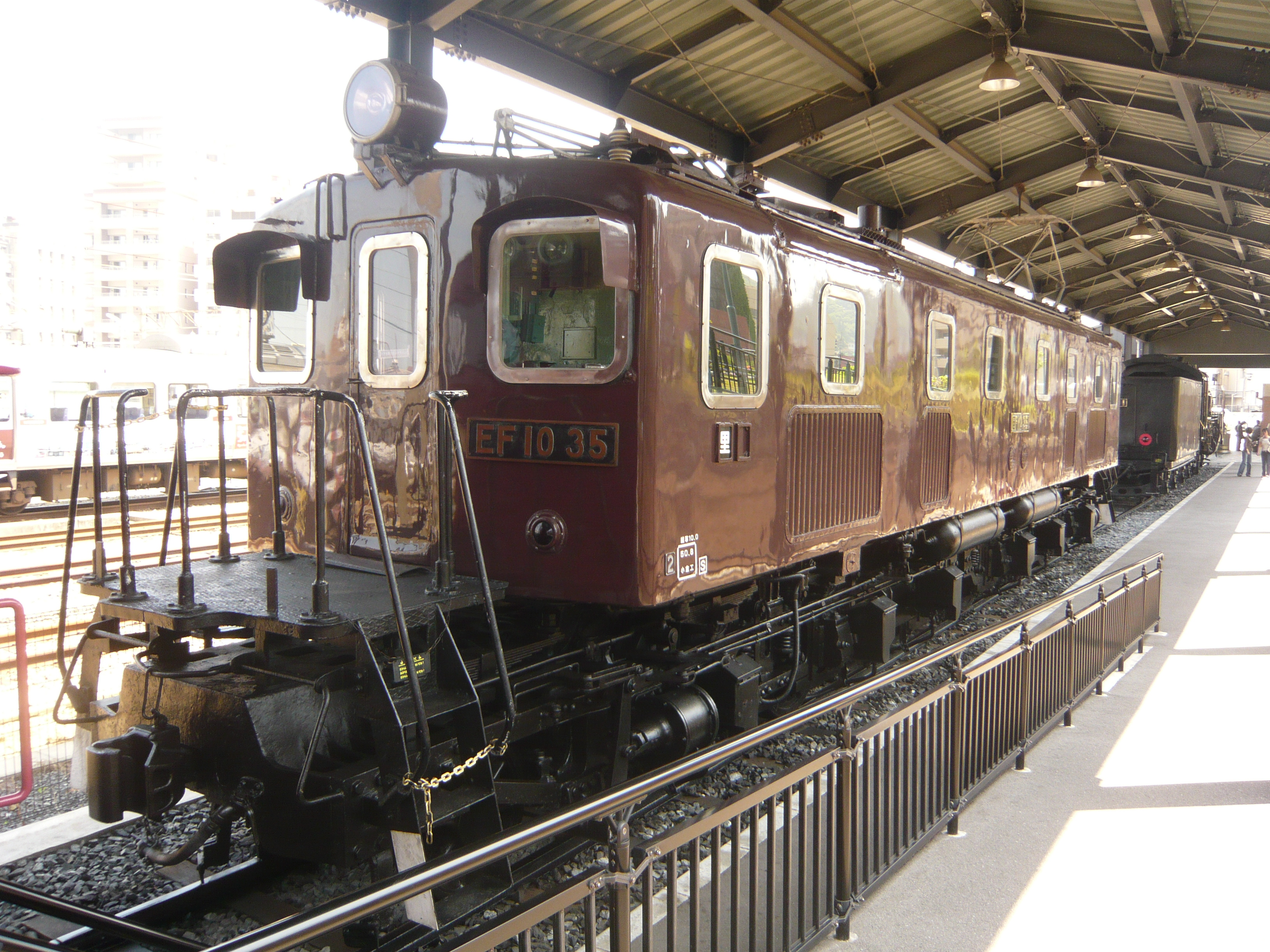JNR Class EF10 on:
[Wikipedia]
[Google]
[Amazon]
The is an
File:JGR-EF10 1-16.jpg, EF10 1-16
File:JNR EL ED16 7.jpg, A Class ED16 locomotive for comparison
File:JGR-EF10 17.jpg, EF10 17
File:JGR-EF10 30-33.jpg, EF10 30-33
 EF10 35 was preserved in a park in Moji-ku, Kitakyushu before being restored and moved to the newly opened Kyushu Railway History Museum in 2003, where it is preserved statically.
EF10 35 was preserved in a park in Moji-ku, Kitakyushu before being restored and moved to the newly opened Kyushu Railway History Museum in 2003, where it is preserved statically.
electric locomotive
An electric locomotive is a locomotive powered by electricity from overhead lines, a third rail or on-board energy storage such as a battery or a supercapacitor. Locomotives with on-board fuelled prime movers, such as diesel engines or g ...
built for the Japanese Government Railways
The Japanese Government Railways (JGR) was the national railway system directly operated by the Japanese Ministry of Railways ( ja, 鉄道省, Tetsudō-shō, ) until 1949. It was a predecessor of Japanese National Railways and the later Japan R ...
formerly operated on freight services in Japan from 1934 until 1983.
History
41 locomotives were built between 1934 and 1941 by the manufacturersHitachi
() is a Japanese multinational conglomerate corporation headquartered in Chiyoda, Tokyo, Japan. It is the parent company of the Hitachi Group (''Hitachi Gurūpu'') and had formed part of the Nissan ''zaibatsu'' and later DKB Group and Fuyo G ...
, Kawasaki Heavy Industries
(or simply Kawasaki) is a Japanese Public company, public multinational corporation manufacturer of motorcycles, engines, Heavy equipment (construction), heavy equipment, aerospace and Military, defense equipment, rolling stock and ships, headq ...
, Kisha Seizo
was a Japanese manufacturer of railway rolling stock that existed from 1896 to 1972.
* 1896: Established by Masaru Inoue as the .
* 1899: Factory opened in Osaka.
* 1901: Merged with the , a coach and car maker in Tokyo. The two plants wer ...
, Mitsubishi
The is a group of autonomous Japanese multinational companies in a variety of industries.
Founded by Yatarō Iwasaki in 1870, the Mitsubishi Group historically descended from the Mitsubishi zaibatsu, a unified company which existed from 1870 ...
, and Toshiba
, commonly known as Toshiba and stylized as TOSHIBA, is a Japanese multinational conglomerate corporation headquartered in Minato, Tokyo, Japan. Its diversified products and services include power, industrial and social infrastructure systems, ...
.
Locomotive construction was divided into four batches, with further differences within individual batches as follows.
EF10 1 - 16
Locomotives EF10 1 to 16 had bodies with similar styling to the Class ED16 and Class EF53 locomotives.EF10 17
EF10 17 was built in 1937 with a welded body and more rounded styling.EF10 18 - 19
Locomotives EF10 18 and 19 continued with the same rounded body styling as EF10 17, but used a similar bar frame bogie design to the first batch of locomotives.EF10 20 - 24
Locomotives EF10 20 to 24 continued with the same body design, but with a different ventilator arrangement.EF10 25 - 29
Locomotives EF10 25 to 29 had welded bodies, but reverted to a more angular design.EF10 30 - 33
Locomotives EF10 30 to 33 continued with the same welded angular body design, but used cast bogie frames.EF10 34 - 41
Locomotives EF10 34 to 41 used the original bar frame bogie design.Preservation
 EF10 35 was preserved in a park in Moji-ku, Kitakyushu before being restored and moved to the newly opened Kyushu Railway History Museum in 2003, where it is preserved statically.
EF10 35 was preserved in a park in Moji-ku, Kitakyushu before being restored and moved to the newly opened Kyushu Railway History Museum in 2003, where it is preserved statically.
Classification
The EF10 classification for this locomotive type is explained below. * E: Electric locomotive * F: Six driving axles * 10: Locomotive with maximum speed 85 km/h or lessSee also
* Railway electrification in JapanReferences
Further reading
* * * {{Jnrelec Electric locomotives of Japan 1500 V DC locomotives 1067 mm gauge locomotives of Japan Railway locomotives introduced in 1934 Hitachi locomotives Kawasaki locomotives Kisha Seizo locomotives Mitsubishi locomotives Toshiba locomotives (1′Co)+(Co1′) locomotives